
First Algorithm
Right at the beginning of the course was a practical part and the task was to think about how to write a good set of rules.
Inspiration
The inspiration where a black and white pattern which is similar to a chess board. The text of the set of rules was written down briefly.
This was my set of rules
Draw a rectangle (not too broadly) and draw from the upper left corner down to the bottom right corner a diagonal line. Paint the right triangle and repeat this endlessly. While you line up the rectangles. The pencil makes no difference.
Result
After 5 flows with our fellow students a small presentation was made. In this presentation everybody had shortly read out his own set of rules and then had given a conclusion to the result. Moreover, our personal favourite should be chosen and be founded. Tips were also sometimes given to the better understanding and criticism was expressed.

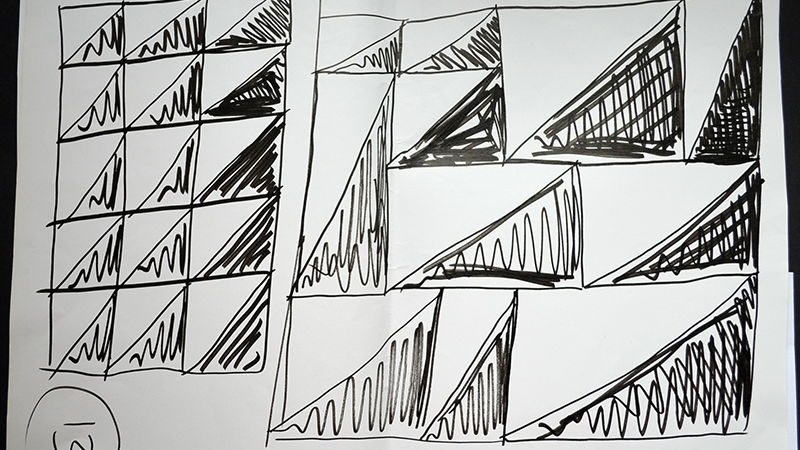
1. 1 Reworking algorithm
Task - Rework the algorithm or sketch a new one. Let them draw from at least 10 people.
With the help of the feedback of our fellow students the set of rules was changed in sting points and all quadrangles should be lined up commensurate and side by side. The results should become more comparable, so that the format was limited to A5.
Set of rules
Firstly read through everything draw a quadrangle (not too big) draw a line from the upper left corner down to the bottom right corner hatch the right half repeat this down and on the right in each case 4x in the same size of the first quadrangle connect that anew resulted quadrangles with each other
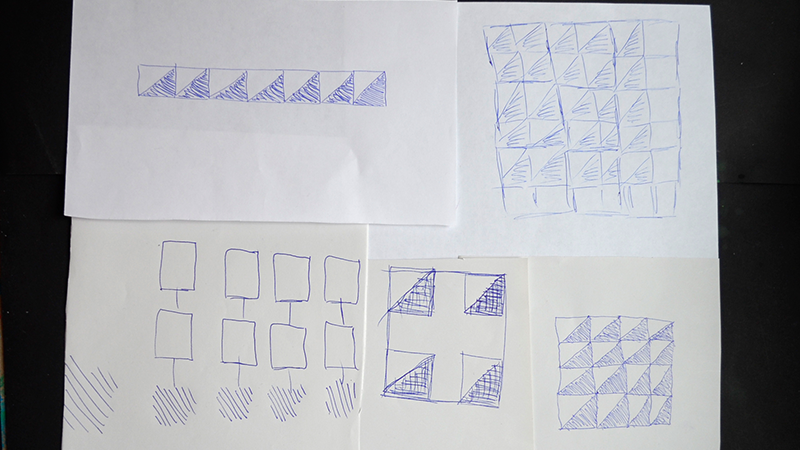
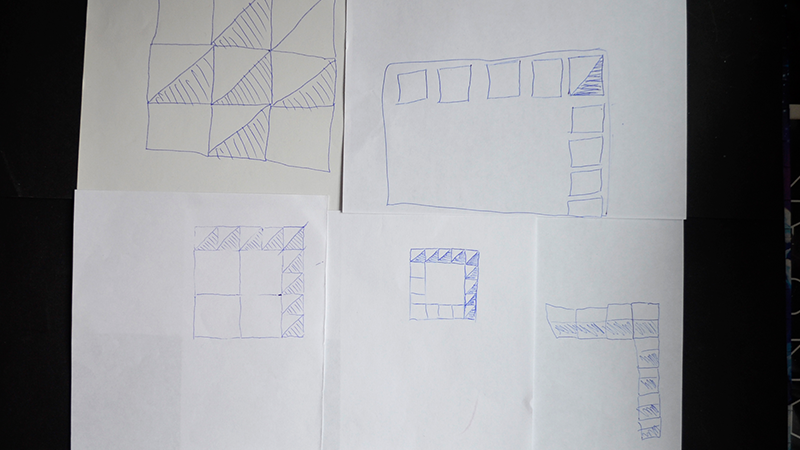
1.2 Postprocessing - Ordered Chaos
Task - Identify the parameters and the constants - Allow carrying out reworking of the algorithm after feedback and this again by 10 people - Change of the parameters per person and identifies like itself the result changed - Find an exciting name for your project - Determine material and bring the originals to the presentation
Examples of the new set of rules

Draw a small circle in the middle of the sheet. Draw circles in arbitrarily sizes all around without touching the other circles. Repeat this a few more times. Draw then many small circles in the space between the others and paint them completely.
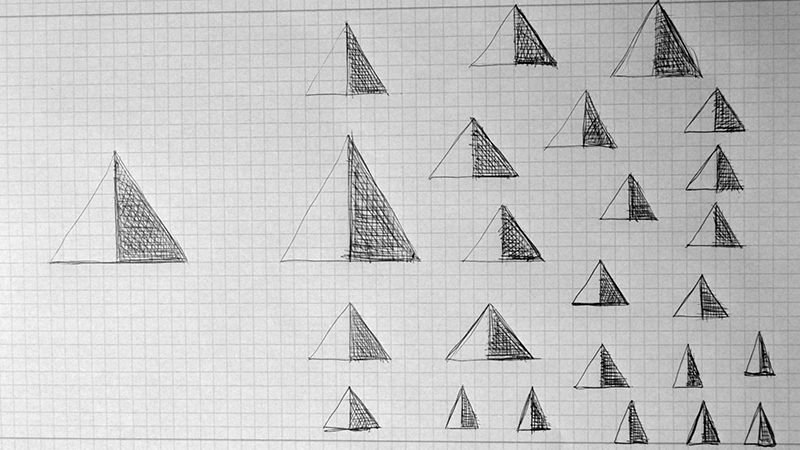
Draw a triangle. Draw besides another one. Draw under, beside and above the triangles many new ones. Halve all resulted triangles in the middle and hatch the right half.
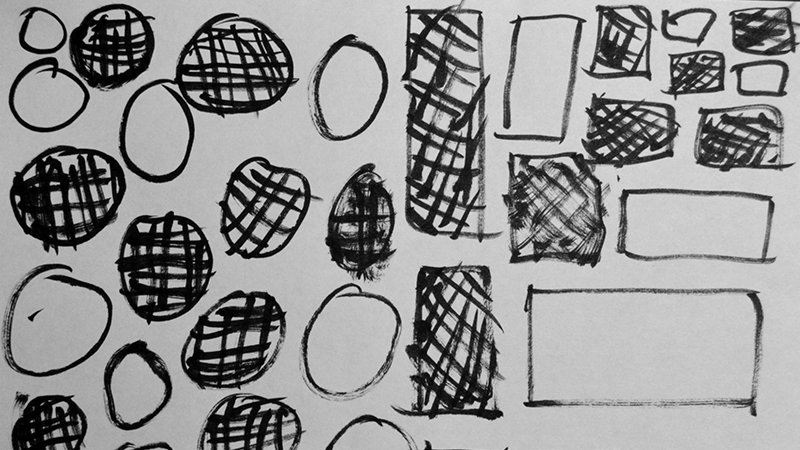
Draw in the left corner only circles. Firstly small and then greater and greater without touching each other. Draw in the right corner only quadrangles. Again only small and then greater and greater without touching. Do that until the sheet is full and hatch randomly some circles and quadrangles.

Add different forms side by side, so that they touch and overlap each other. Paint the overlapping.
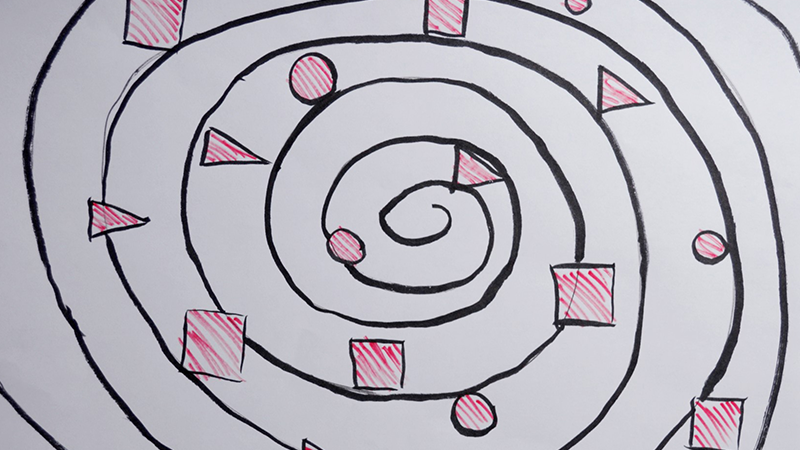
Draw from the middle of the sheet a spiral about the whole sheet. Draw randomly distributed circles, quadrangles and triangles all over the sheet. Hatch this in the end.
At the end of this project very different results came out. From the construction was the most exciting one this with the spiral, so that this project went on in this direction. Although it had differed from the first set of rules very much, also about detours comes an interesting result.
1. 3 Postprocessing - Spiral Chaos
Task - Rework the set of rules after other feedback - No Step-by-Step instructions, formulate a right set of rules - A connected series should be the result - Reproduction can be a part of the result (different cuttings)
Set of rules
Draw in the standing position from the middle of the sheet a spiral about the whole sheet without removing the pencil. Draw randomly distributed circles on the sheet which the spiral cuts and paints the forms in the end.
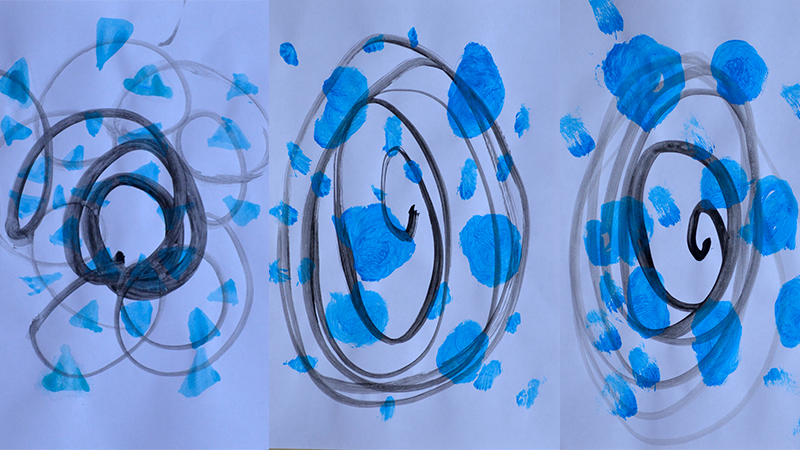
1.4 Conclusion
Many were afraid of the white sheet, so they got the tip to close theirs eyes. On this occasion, many nice and interesting things have come out. This project was drawn with Indian ink and colour. Every test person had drawn a spiral, this had to dry. So every test person got the spiral of another test person to sign further. After some colours were tested in the approach, the decision was taken for a strong blue.
On the whole it has given pleasure and the results speak for themselves.

License (MIT)
| *© 2017 | Paulina Mrksic, Fh Potsdam - University of applied sciences & Fabian Morón Zirfas* |
Permission is hereby granted, free of charge, to any person obtaining a copy of this software and associated documentation files (the “Software”), to deal in the Software without restriction, including without limitation the rights to use, copy, modify, merge, publish, distribute, sublicense, and/or sell copies of the Software, and to permit persons to whom the Software is furnished to do so, subject to the following conditions: The above copyright notice and this permission notice shall be included in all copies or substantial portions of the Software.
THE SOFTWARE IS PROVIDED “AS IS”, WITHOUT WARRANTY OF ANY KIND, EXPRESS OR IMPLIED, INCLUDING BUT NOT LIMITED TO THE WARRANTIES OF MERCHANTABILITY, FITNESS FOR A PARTICULAR PURPOSE AND NONINFRINGEMENT. IN NO EVENT SHALL THE AUTHORS OR COPYRIGHT HOLDERS BE LIABLE FOR ANY CLAIM, DAMAGES OR OTHER LIABILITY, WHETHER IN AN ACTION OF CONTRACT, TORT OR OTHERWISE, ARISING FROM, OUT OF OR IN CONNECTION WITH THE SOFTWARE OR THE USE OR OTHER DEALINGS IN THE SOFTWARE.
See also http://www.opensource.org/licenses/mit-license.php